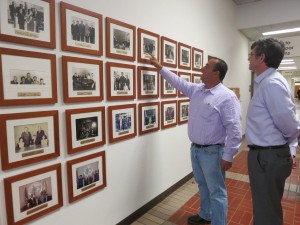By Francesca Segre
In the past 60 years, only one Latino and one African-American have served on the San Mateo County Board of Supervisors. Every other supervisor has been white. This in a county where one-quarter of the population is Asian and another quarter is Latino.

The lack of diversity in government led to a civil rights lawsuit that claimed the county's at-large voting system was diluting the electoral power of minorities. The county settled the suit last year, agreeing to reconsider its district lines and solicit public input on how they should be drawn.
As part of that effort, San Mateo County is pointing residents to a new online tool where they can redraw the lines of the county's five districts. The tool, created by the organization Healthy City, shows how changing borders would affect the district's population and ethnic makeup, and it allows any user to submit suggested maps to the Board of Supervisors.
In addition to the website, residents also have been invited to a series of meetings to discuss their boundary preferences.